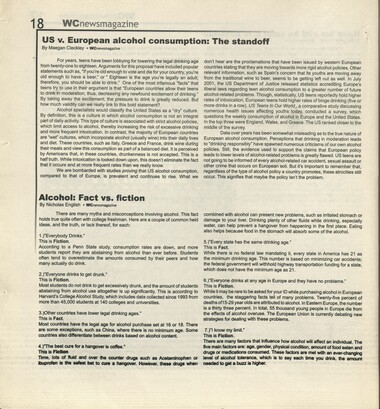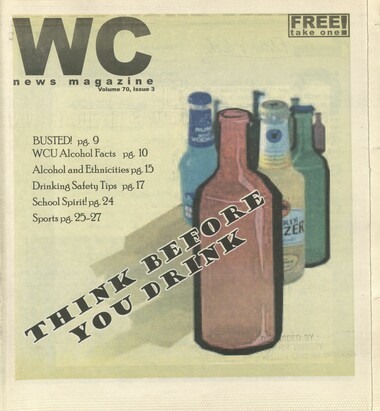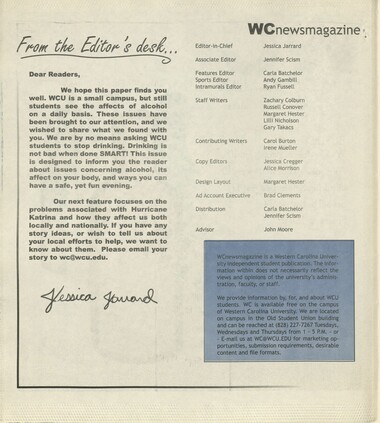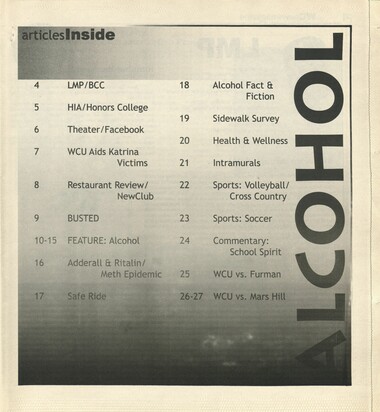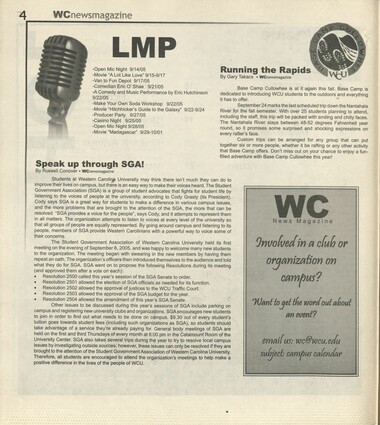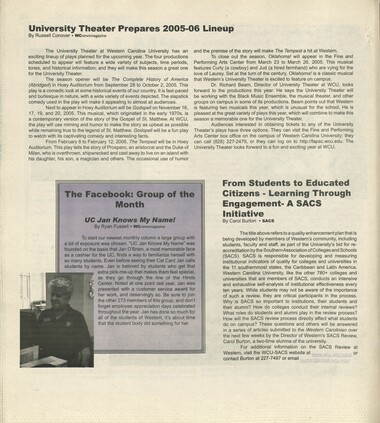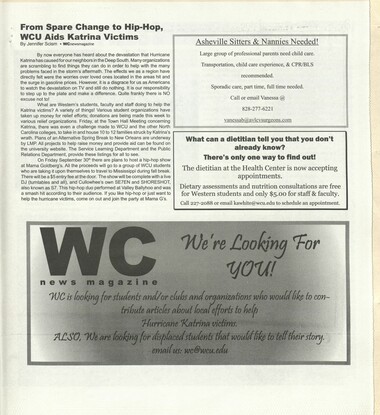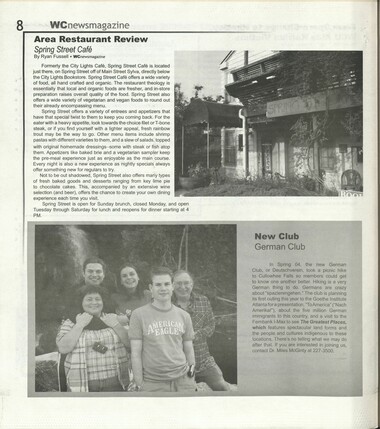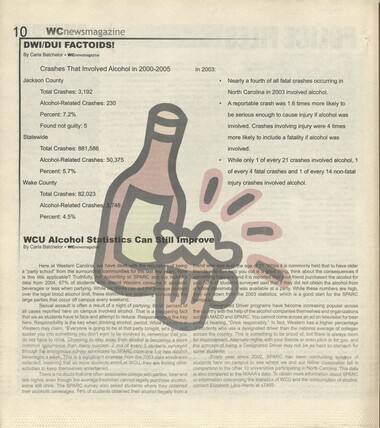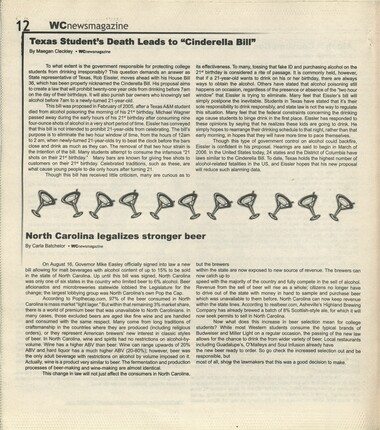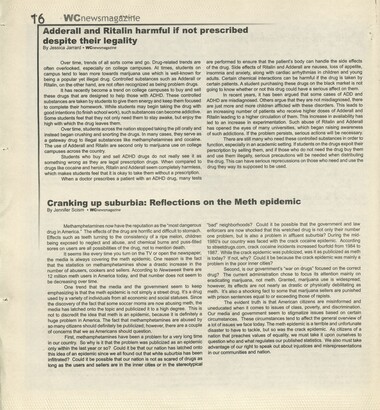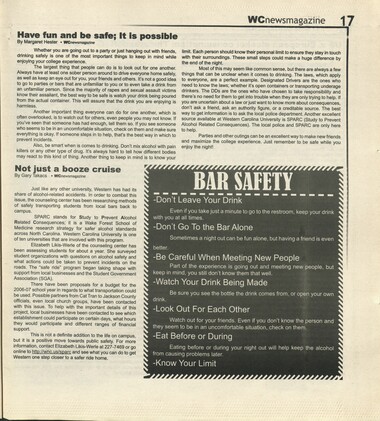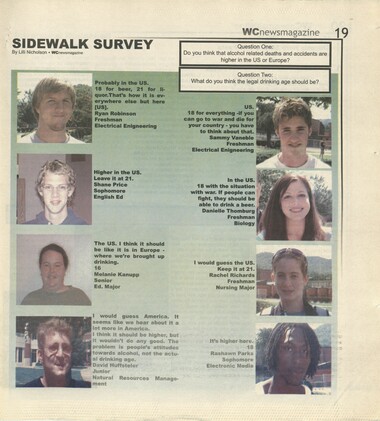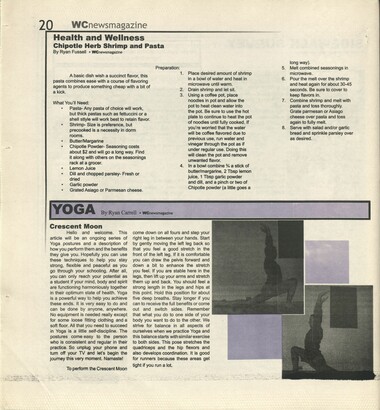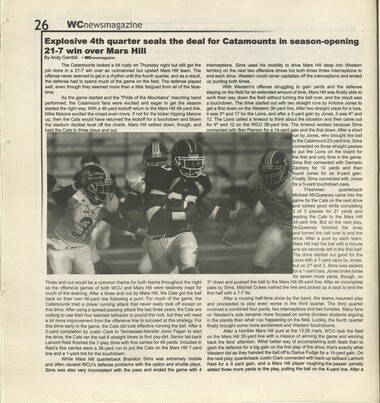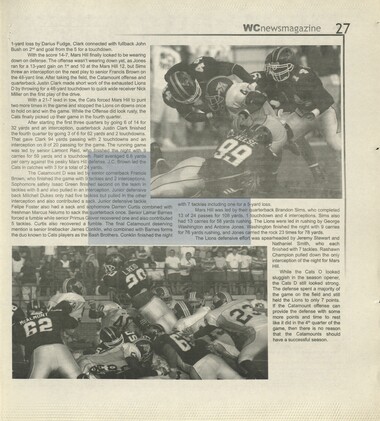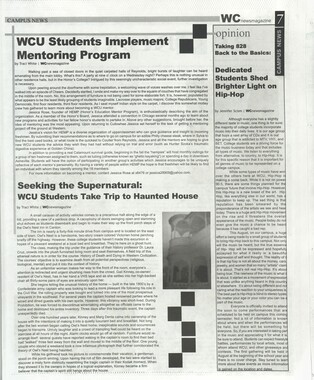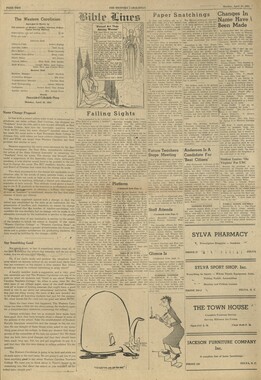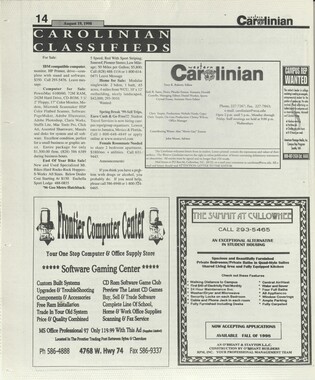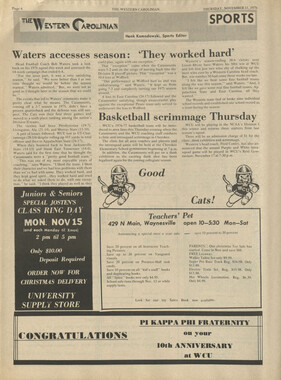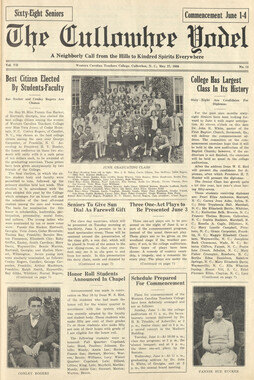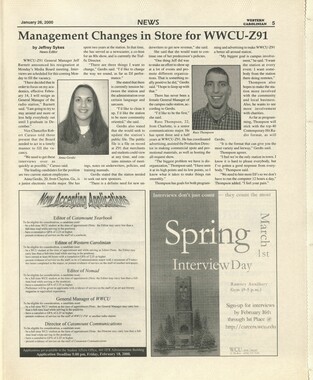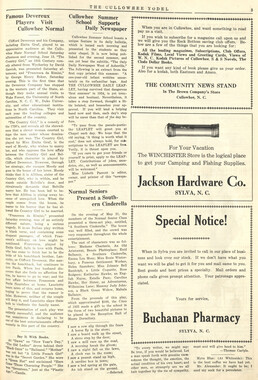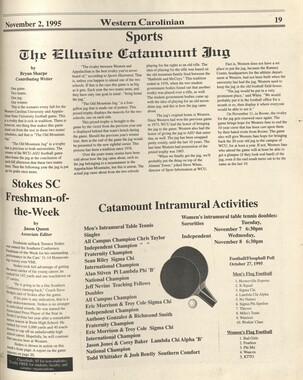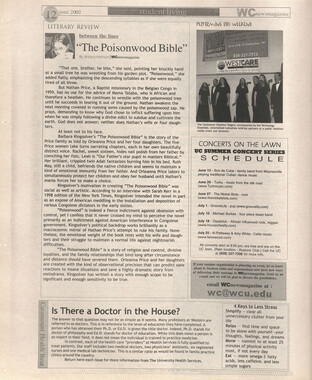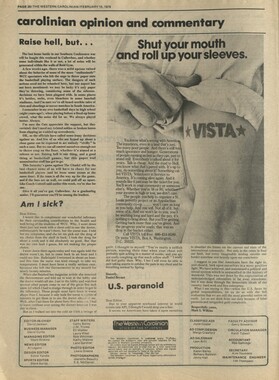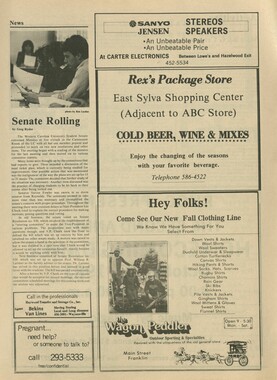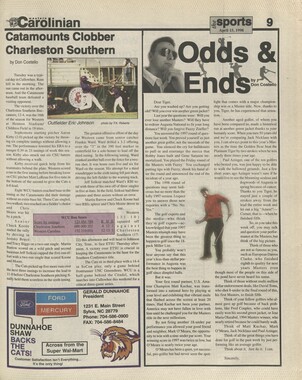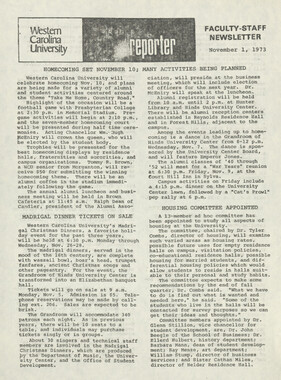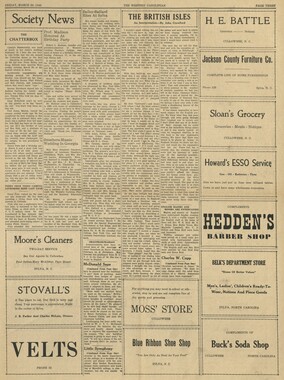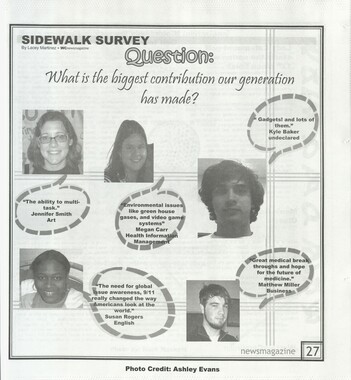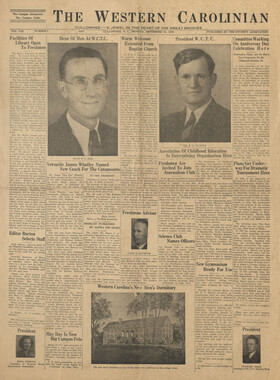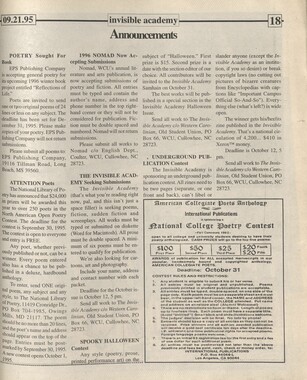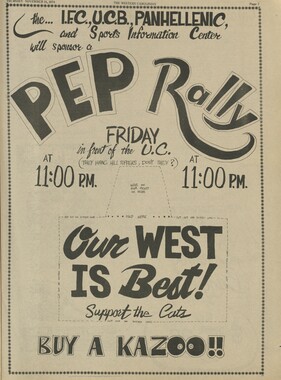Western Carolina University (21)
View all
- Canton Champion Fibre Company (2308)
- Cherokee Traditions (291)
- Civil War in Southern Appalachia (165)
- Craft Revival (1942)
- George Masa Collection (137)
- Great Smoky Mountains - A Park for America (3080)
- Highlights from Western Carolina University (422)
- Horace Kephart (973)
- Journeys Through Jackson (159)
- LGBTQIA+ Archive of Jackson County (89)
- Oral Histories of Western North Carolina (317)
- Picturing Appalachia (6617)
- Stories of Mountain Folk (413)
- Travel Western North Carolina (153)
- Western Carolina University Fine Art Museum Vitreograph Collection (129)
- Western Carolina University Herbarium (92)
- Western Carolina University: Making Memories (738)
- Western Carolina University Publications (2491)
- Western Carolina University Restricted Electronic Theses and Dissertations (146)
- Western North Carolina Regional Maps (71)
- World War II in Southern Appalachia (131)
University of North Carolina Asheville (6)
View all
- Allanstand Cottage Industries (62)
- Appalachian National Park Association (53)
- Bennett, Kelly, 1890-1974 (1463)
- Berry, Walter (76)
- Brasstown Carvers (40)
- Carver, George Washington, 1864?-1943 (26)
- Cathey, Joseph, 1803-1874 (1)
- Champion Fibre Company (233)
- Champion Paper and Fibre Company (297)
- Cherokee Indian Fair Association (16)
- Cherokee Language Program (22)
- Crowe, Amanda (40)
- Edmonston, Thomas Benton, 1842-1907 (7)
- Ensley, A. L. (Abraham Lincoln), 1865-1948 (275)
- Fromer, Irving Rhodes, 1913-1994 (70)
- George Butz (BFS 1907) (46)
- Goodrich, Frances Louisa (120)
- Grant, George Alexander, 1891-1964 (96)
- Heard, Marian Gladys (60)
- Kephart, Calvin, 1883-1969 (15)
- Kephart, Horace, 1862-1931 (313)
- Kephart, Laura, 1862-1954 (67)
- Laney, Gideon Thomas, 1889-1976 (439)
- Masa, George, 1881-1933 (61)
- McElhinney, William Julian, 1896-1953 (44)
- Niggli, Josephina, 1910-1983 (10)
- North Carolina Park Commission (105)
- Osborne, Kezia Stradley (9)
- Owens, Samuel Robert, 1918-1995 (11)
- Penland Weavers and Potters (36)
- Roberts, Vivienne (15)
- Roth, Albert, 1890-1974 (142)
- Schenck, Carl Alwin, 1868-1955 (1)
- Sherrill's Photography Studio (2565)
- Southern Highland Handicraft Guild (127)
- Southern Highlanders, Inc. (71)
- Stalcup, Jesse Bryson (46)
- Stearns, I. K. (213)
- Thompson, James Edward, 1880-1976 (226)
- United States. Indian Arts and Crafts Board (130)
- USFS (683)
- Vance, Zebulon Baird, 1830-1894 (1)
- Weaver, Zebulon, 1872-1948 (58)
- Western Carolina College (230)
- Western Carolina Teachers College (282)
- Western Carolina University (2008)
- Western Carolina University. Mountain Heritage Center (18)
- Whitman, Walt, 1819-1892 (10)
- Wilburn, Hiram Coleman, 1880-1967 (73)
- Williams, Isadora (3)
- Cain, Doreyl Ammons (0)
- Crittenden, Lorraine (0)
- Rhodes, Judy (0)
- Smith, Edward Clark (0)
- Appalachian Region, Southern (3032)
- Asheville (N.C.) (1945)
- Avery County (N.C.) (26)
- Blount County (Tenn.) (195)
- Buncombe County (N.C.) (1680)
- Cherokee County (N.C.) (283)
- Clay County (N.C.) (556)
- Graham County (N.C.) (238)
- Great Smoky Mountains National Park (N.C. and Tenn.) (525)
- Haywood County (N.C.) (3573)
- Henderson County (N.C.) (70)
- Jackson County (N.C.) (4924)
- Knox County (Tenn.) (35)
- Knoxville (Tenn.) (13)
- Lake Santeetlah (N.C.) (10)
- Macon County (N.C.) (421)
- Madison County (N.C.) (216)
- McDowell County (N.C.) (39)
- Mitchell County (N.C.) (135)
- Polk County (N.C.) (35)
- Qualla Boundary (982)
- Rutherford County (N.C.) (78)
- Swain County (N.C.) (2185)
- Transylvania County (N.C.) (270)
- Watauga County (N.C.) (12)
- Waynesville (N.C.) (86)
- Yancey County (N.C.) (72)
- Aerial Photographs (3)
- Aerial Views (60)
- Albums (books) (4)
- Articles (1)
- Artifacts (object Genre) (228)
- Bibliographies (1)
- Biography (general Genre) (2)
- Cards (information Artifacts) (38)
- Clippings (information Artifacts) (192)
- Copybooks (instructional Materials) (3)
- Crafts (art Genres) (622)
- Depictions (visual Works) (21)
- Design Drawings (1)
- Digital Moving Image Formats (2)
- Drawings (visual Works) (185)
- Envelopes (101)
- Exhibitions (events) (1)
- Facsimiles (reproductions) (1)
- Fiction (general Genre) (4)
- Financial Records (12)
- Fliers (printed Matter) (67)
- Glass Plate Negatives (381)
- Guidebooks (2)
- Internegatives (10)
- Interviews (822)
- Land Surveys (102)
- Letters (correspondence) (1045)
- Manuscripts (documents) (618)
- Maps (documents) (177)
- Memorandums (25)
- Minutes (administrative Records) (59)
- Negatives (photographs) (6090)
- Newsletters (1290)
- Newspapers (2)
- Notebooks (8)
- Occupation Currency (1)
- Paintings (visual Works) (1)
- Pen And Ink Drawings (1)
- Periodicals (194)
- Personal Narratives (10)
- Photographs (12977)
- Plans (maps) (1)
- Poetry (6)
- Portraits (4568)
- Postcards (329)
- Programs (documents) (181)
- Publications (documents) (2444)
- Questionnaires (65)
- Relief Prints (26)
- Sayings (literary Genre) (1)
- Scrapbooks (282)
- Sheet Music (2)
- Slides (photographs) (402)
- Songs (musical Compositions) (2)
- Sound Recordings (801)
- Specimens (92)
- Speeches (documents) (18)
- Tintypes (photographs) (8)
- Transcripts (328)
- Text Messages (0)
- A.L. Ensley Collection (275)
- Appalachian Industrial School Records (7)
- Appalachian National Park Association Records (336)
- Axley-Meroney Collection (2)
- Bayard Wootten Photograph Collection (20)
- Bethel Rural Community Organization Collection (7)
- Blumer Collection (5)
- C.W. Slagle Collection (20)
- Canton Area Historical Museum (2110)
- Carlos C. Campbell Collection (462)
- Cataloochee History Project (64)
- Cherokee Studies Collection (4)
- Daisy Dame Photograph Album (5)
- Daniel Boone VI Collection (1)
- Doris Ulmann Photograph Collection (112)
- Elizabeth H. Lasley Collection (1)
- Elizabeth Woolworth Szold Fleharty Collection (4)
- Frank Fry Collection (95)
- George Masa Collection (173)
- Gideon Laney Collection (452)
- Hazel Scarborough Collection (2)
- Hiram C. Wilburn Papers (28)
- Historic Photographs Collection (236)
- Horace Kephart Collection (861)
- Humbard Collection (33)
- Hunter and Weaver Families Collection (1)
- I. D. Blumenthal Collection (4)
- Isadora Williams Collection (4)
- Jesse Bryson Stalcup Collection (47)
- Jim Thompson Collection (224)
- John B. Battle Collection (7)
- John C. Campbell Folk School Records (80)
- John Parris Collection (6)
- Judaculla Rock project (2)
- Kelly Bennett Collection (1482)
- Love Family Papers (11)
- Major Wiley Parris Civil War Letters (3)
- Map Collection (12)
- McFee-Misemer Civil War Letters (34)
- Mountain Heritage Center Collection (4)
- Norburn - Robertson - Thomson Families Collection (44)
- Pauline Hood Collection (7)
- Pre-Guild Collection (2)
- Qualla Arts and Crafts Mutual Collection (12)
- R.A. Romanes Collection (681)
- Rosser H. Taylor Collection (1)
- Samuel Robert Owens Collection (94)
- Sara Madison Collection (144)
- Sherrill Studio Photo Collection (2558)
- Smoky Mountains Hiking Club Collection (616)
- Stories of Mountain Folk - Radio Programs (374)
- The Reporter, Western Carolina University (510)
- Venoy and Elizabeth Reed Collection (16)
- WCU Gender and Sexuality Oral History Project (36)
- WCU Mountain Heritage Center Oral Histories (25)
- WCU Oral History Collection - Mountain People, Mountain Lives (71)
- WCU Students Newspapers Collection (1923)
- Western North Carolina Tomorrow Black Oral History Project (69)
- William Williams Stringfield Collection (2)
- Zebulon Weaver Collection (109)
- African Americans (390)
- Appalachian Trail (35)
- Artisans (521)
- Cherokee art (84)
- Cherokee artists -- North Carolina (10)
- Cherokee language (21)
- Cherokee pottery (101)
- Cherokee women (208)
- Church buildings (190)
- Civilian Conservation Corps (U.S.) (111)
- College student newspapers and periodicals (2012)
- Dams (108)
- Dance (1023)
- Education (222)
- Floods (63)
- Folk music (1015)
- Forced removal, 1813-1903 (2)
- Forest conservation (220)
- Forests and forestry (1198)
- Gender nonconformity (4)
- Great Smoky Mountains National Park (N.C. and Tenn.) (181)
- Hunting (47)
- Landscape photography (25)
- Logging (122)
- Maps (83)
- Mines and mineral resources (9)
- North Carolina -- Maps (18)
- Paper industry (38)
- Postcards (255)
- Pottery (135)
- Railroad trains (72)
- Rural electrification -- North Carolina, Western (3)
- School integration -- Southern States (2)
- Segregation -- North Carolina, Western (5)
- Slavery (5)
- Sports (452)
- Storytelling (243)
- Waterfalls -- Great Smoky Mountains (N.C. and Tenn.) (66)
- Weaving -- Appalachian Region, Southern (280)
- Wood-carving -- Appalachian Region, Southern (328)
- World War, 1939-1945 (173)
Western Carolinian Volume 70 Number 03
Item
Item’s are ‘child’ level descriptions to ‘parent’ objects, (e.g. one page of a whole book).
-
-
18 WCnewsmagazine ee ee By Maegan Cleckley * WCnewsmagazine For years, teens have been lobbying for lowering the legal drinking age from twenty-one to eighteen. Arguments for this proposal have included popular statements such as, If you're old enough to vote and die for your country, you're old enough to have a beer, or Eighteen is the age you're legally an adult; therefore, you should be able to drink. One of the most infamous facts that teens try to use in their argument is that European countries allow their teens to drink in moderation, thus, decreasing any newfound excitement of drinking. By taking away the excitement, the pressure to drink is greatly reduced. But how much validity can we really link to this bold statement? Alcohol specialists would classify the United States as a dry culture. By definition, this is a culture in which alcohol consumption is not an integral part of daily activity. This type of culture is associated with strict alcohol policies, which limit access to alcohol, thereby increasing the risk of excessive drinking and more frequent intoxication. In contrast, the majority of European countries are wet cultures, which incorporate alcohol (usually wine) into their daily lives and diet. These countries, such as Italy, Greece and France, drink wine during their meals and view this consumption as part of a balanced diet. It is perceived by Americans that, in these countries, drunkenness is not accepted. This is a half truth. While intoxication is looked down upon, this doesnt eliminate the fact that it occurs and at more frequent rates than we really know. We are bombarded with studies proving that US alcohol consumption, compared to that of Europe, is prevalent and continues to rise. What we Alcohol: Fact vs. fiction By Nicholas English * WCnewsmagazine There are many myths and misconceptions involving alcohol. This fact holds true quite often with college freshman. Here are a couple of common held ideas, and the truth, or lack thereof, for each: 1.)"Everybody Drinks. _ This is Fiction. According to a Penn State study, consumption rates are down, and more students report they are abstaining from alcohol than ever before. Students often tend to overestimate the amounts consumed by their peers and how many actually do drink. 2.)"Everyone drinks to get drunk. This is Fiction. Most students do not drink to get excessively drunk, and the amount of students abstaining from alcohol use altogether is up significantly. This is according to Harvard's College Alcohol Study, which includes data collected since 1993 from more than 45,000 students at 140 colleges and universities. 3.)Other countries have lower legal drinking ages. This is Fact. Most countries have the legal age for alcohol purchase set at 16 or 18. There are some exceptions, such as China, where there is no minimum age. Some countries also differentiate between drinks based on alcohol content. 4.)"The best cure for a hangover is coffee. This is Fiction = Time, lots of fluid and over the counter drugs such as Acetaminophen or ibuprofen is the safest bet to cure a hangover. However, these drugs when ee US v. European alcohol consumption: The standoff dont hear are the proclamations that have been issued by western European countries stating that they are moving towards more rigid alcohol policies. Other relevant information, such as Spain's concern that its youths are moving away from the traditional wine to beer, seems to be getting left out as well. In July 2001, the US Department of Justice released statistics accrediting Europe's liberal laws regarding teen alcohol consumption to a greater number of future alcohol-related problems. Though, statistically, US teens reportedly hold higher rates of intoxication, European teens hold higher rates of binge drinking (five or more drinks in a row). US Teens In Our World_, a comparative study discussing numerous health issues affecting youths today, conducted a survey, which questions the weekly consumption of alcohol in Europe and the United States. In the top three were England, Wales, and Greece. The US ranked closer to the middle of the survey. Data over years has been somewhat misleading as to the true nature of European alcohol consumption. Perceptions that drinking in moderation leads to drinking responsibly have spawned numerous criticisms of our own alcohol policies. Still, the evidence used to support the claims that European policy leads to lower levels of alcohol-related problems is greatly flawed. US teens are not going to be informed of every alcohol-related car accident, sexual assault or other crime that occurs on European soil. But its important to remember that, regardless of the type of alcohol policy a country promotes, these atrocities still occur. This signifies that maybe the policy isnt the problem. combined with alcohol can present new problems, such as irritated stomach or damage to your liver. Drinking plenty of other fluids while drinking, especially water, can help prevent a hangover from happening in the first place. Eating also helps because food in the stomach will absorb some of the alcohol. 5.)"Every state has the same drinking age. This is Fact. While there is no federal law mandating it, every state in America has 21 as the minimum drinking age. This number is based on minimizing car accidents; the federal government will withhold highway transportation funding for a state, which does not have the minimum age as 21. 6.)"Everyone drinks at any age in Europe and they have no problems. This is Fiction. While it may be rare to be asked for your ID while purchasing alcohol in European countries, the staggering facts tell of many problems. Twenty-five percent of deaths of 15-29 year olds are attributed to alcohol. In Eastern Europe, the number is a thirty three percent. In total, 55 thousand young people in Europe die from the effects of alcohol overuse. The European Union is currently debating new strategies for dealing with these problems. 7.)'1 know my limit. This is Fiction. There are many factors that influence how alcoho! will affect an individual. The five main factors are: age, gender, physical condition, amount of food eaten and drugs or medications consumed. These factors are met with an ever-changing level of alcohol tolerance, which is to say each time you drink, the amount needed to get a buzz is higher.
Object
Object’s are ‘parent’ level descriptions to ‘children’ items, (e.g. a book with pages).
-
The Western Carolinian is Western Carolina University's student-run newspaper. The paper was published as the Cullowhee Yodel from 1924 to 1931 before changing its name to The Western Carolinian in 1933.
-
